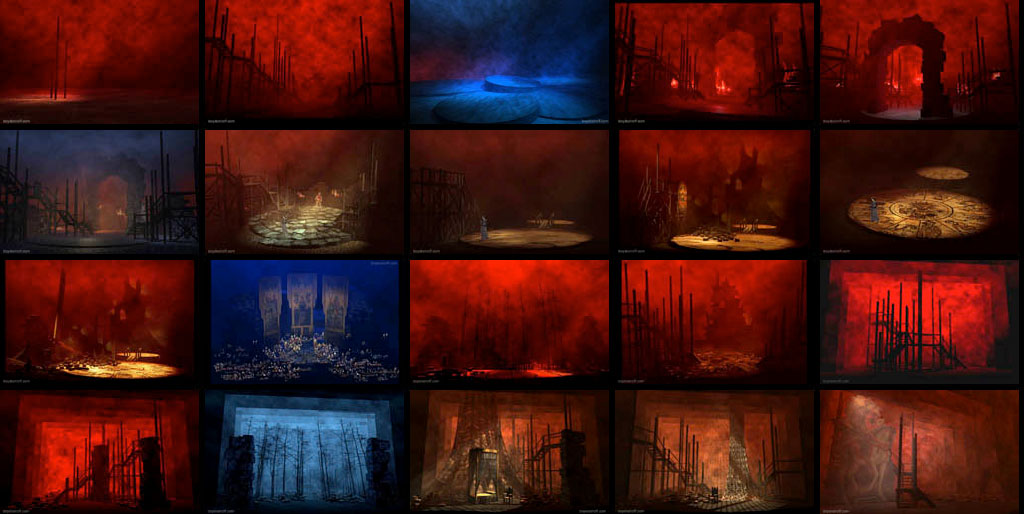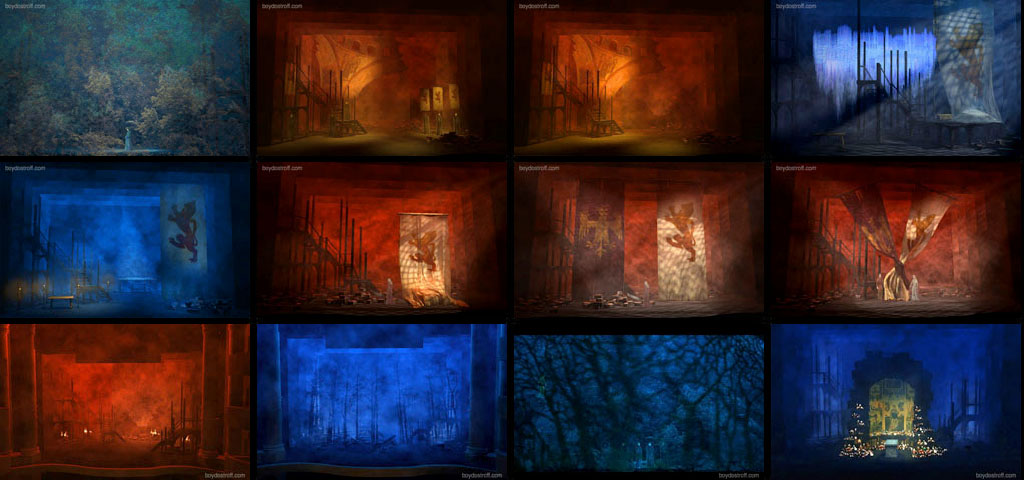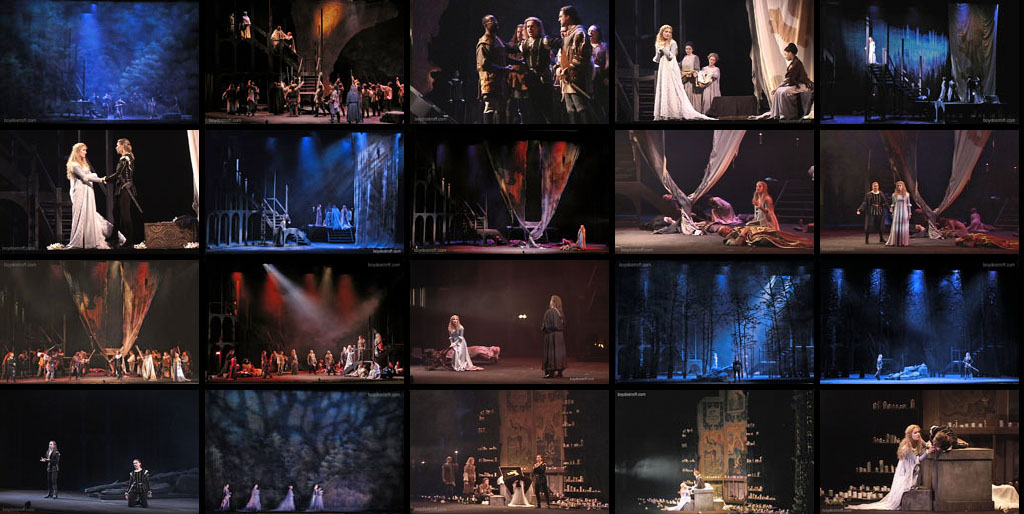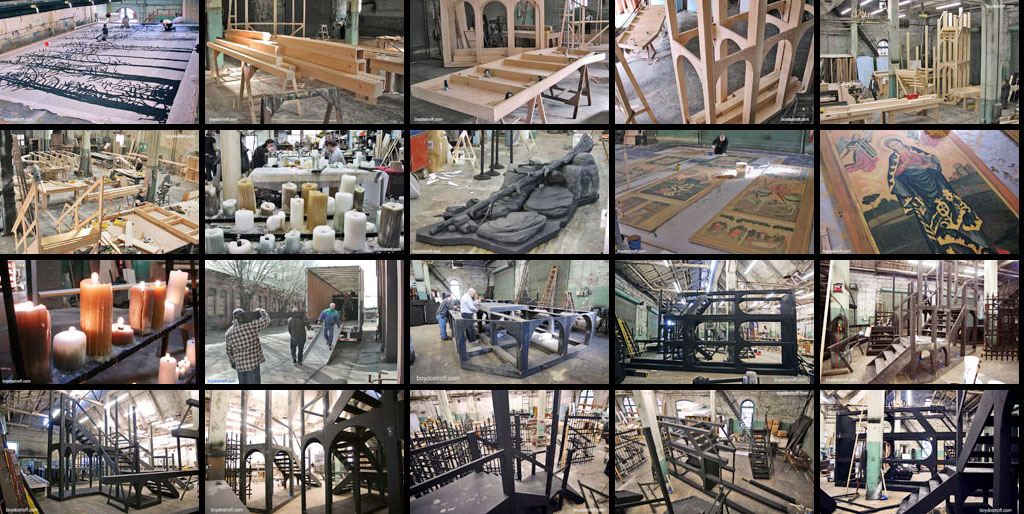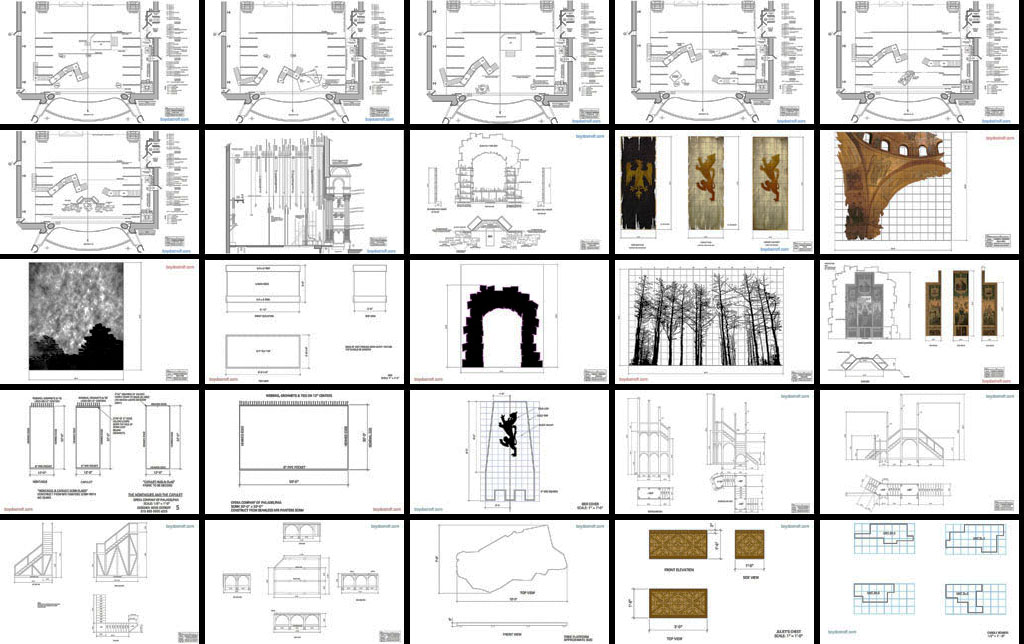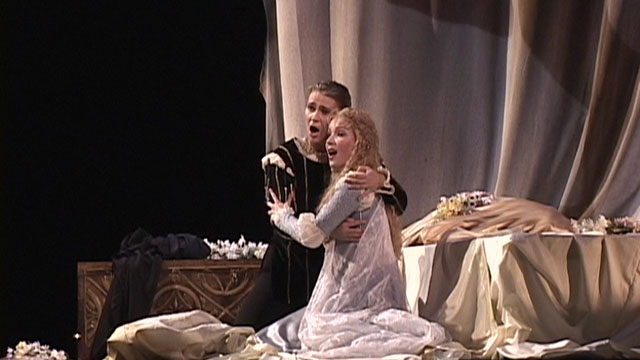Opera Company of Philadelphia • April 2, 7, 11, 13, 17, 19, 21, 2002 at the Academy of Music
Scenic Design: Boyd Ostroff • Director: Kay Walker Castaldo • Lighting Design: John Stephen Hoey • Costume Design: Richard St. Clair • Hair and Makeup Design: Tom Watson • Assistant Director/Dance Movement: David McCarty • Conductor: Corrado Rovaris
Tebaldo: Misha Didyk • Capellio: Mark McCrory • Lorenzo: Brian Jauhianen • Romeo: Ruxandra Donose • Guiletta: Anna Netrebko
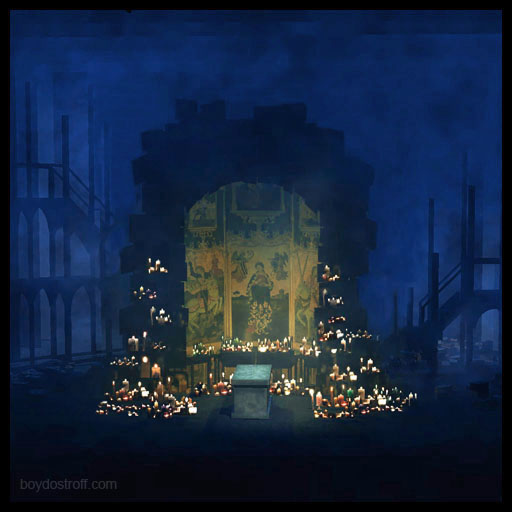
“Boyd Ostroff’s sets, complemented by John Stephen Hoey’s shadowy, atmospheric lighting, are impressive not only for their grandeur and imagination but because they so effortlessly became a part of the production as a whole.” – Peter Burwasser, Philadelphia City Paper, 4/18/2002
“Giulietta was perched unusually high, 12 feet up, during the scene – a lovely bit of staging that made the point that she yearned for escape, while pointing the way toward the end, when she ultimately found it near God. Religious iconography and architecture, some of it quite beautiful, was put to smart use by set designer Boyd Ostroff.” – Peter Dobrin, The Philadelphia Inquirer, 4/9/2002
“The Capulets and the Montagues was a stunningly set opera. The designers created a stage that looked war-torn, bringing to attention the shattering enmity between the two families. However, for scenes representing the fantastical love of Romeo and Juliet, scrims – thin, painted silk drops that were painted with lush forests – were dropped in front of the set. Particularly evocative was the set for the death scene, where a thin black scrim rose to reveal a tomb lit by hundreds of candles. As the flames flickered, Romeo’s despair was chillingly real.” – Belen Del Amo, The Daily Pennsylvanian, 4/18/2002
“Boyd Ostroff’s designs (with suggestions of ruined churches and distant castles particularly effective) and Richard St Clair’s costumes evoked a murky, war-torn Middle Ages in which incessant fighting crowded out all else” – David Shengold, www.classicstoday.com, 4/17/2002
“The production by Kay Walker Castaldo was a fairly traditional one, but with a few flights of fancy that aided her storytelling, as did the fittingly beautiful sets by Boyd Ostroff.” – Maria Nockin, Opera Japonica, 4/27/2002
Design Evolution
Final Design Sketches
Production Photos
Construction Photos
Backstage Photos
Design and Technical Drawings
 Production Staff
Production Staff
Director of Production: Jerome Sherk • Director of Design and Technology: Boyd Ostroff • Production Manager: Gregory Prioleau • Production Coordinator: Ulrike Shapiro • Production Stage Manager: Margo Maier • Asst Stage Managers: Jennifer Nowinowski, Robert Manning •Lighting Coordinator: Drew Billiau • Props Coordinator: Cindy Felice • Staff Scenic Artist: Karen Tennant
Technical Director: John Callahan • Properties Master: Daniel Giaquinta, Jr • Master Electrcian: Dennis Moore, Jr • Asst Electrician: William Hennessey • Flyman: Timothy Callahan
Carpenters: John Callahan, John Damiani, Thomas Bowen, Paul Lodes, Thomas Reap, Edward Murray, Doug McBrearty, Ralph Woolverton, Moisés Figueroa, Timothy Callahan, John Griffith, Carmen Santoro,
Scenic Artists: Karyn Gerred, Matthew Hamilton, Dylan Collier, Vanessa Fenton, Krzystof Bratun, Shawn O’Connell
Props Artists: Christie Whisman, Cybele Perry, Kate Carbone, Pamela Raines, Greta Alexander, Jonanna Dinella, Erica Lee, Rebekah Kilzer,
Scenery Data
- Built March, 2002 at the Opera Company of Philadelphia Production Center / Frankford Arsenal
- Scenery construction budget: $128,930 • Actual cost: $115,977 • Total rental income: $11,000 as of May 2011
- Load-in crew: 18 • Run Crew: 22 (carpenters, flymen and props only) • 8 hours required for load-in • 2 trucks required for shipping
- This production no longer exists
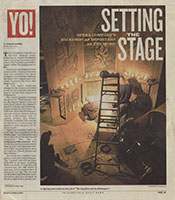 “Inspirational set design has been characteristic of local productions since the creation of the Opera Company’s own set shop in 1993 and has helped the company gain a national reputation for more than great music. In fact, opera companies throughout the country have taken to renting the company’s sets once they’ve served their purpose in Philadelphia.
“Inspirational set design has been characteristic of local productions since the creation of the Opera Company’s own set shop in 1993 and has helped the company gain a national reputation for more than great music. In fact, opera companies throughout the country have taken to renting the company’s sets once they’ve served their purpose in Philadelphia.
The creative process of creating the street for ‘The Capulets and the Montagues’ began a year ago when Boyd Ostroff, the company’s director of design and technology, began preliminary sketches. Ostroff made more than 90 computer-generated scene designs and, in months of discussions with the opera’s director, Kay Walker Castaldo, developed their concept for the show – a love story set against a continuing war in an uncertain world.
… During construction in the company’s set shop at the old Frankford Arsenal, technical director John Callahan – who knows every inch of the Academy of Music’s idiosyncratic backstage – says it’s essential that his 30 men be able to move and reassemble them under pressure.
… Once the sets arrive at the academy, Callahan becomes a prowling lion backstage, noticing possible problems in the hanging pieces, the storage of sets in the cramped wings and a thousand other details. His ability to solve impossible problems is legendary.” – Tom Di Nardo, Philadelphia Daily News, 4/8/2002
I Capuleti e i Montecchi on YouTube (videography by Boyd Ostroff for the Opera Company of Philadelphia)
Production History
Opera Company of Philadelphia • April 2, 7, 11, 13, 17, 19, 21, 2002 (premiere) • Scenic Design: Boyd Ostroff • Director: Kay Walker Castaldo • Lighting Design: John Stephen Hoey • Costume Design: Richard St. Clair • Conductor: Corrado Rovaris
Florentine Opera • April 25, 26, 27, 2008 • Scenic Design: Boyd Ostroff • Director: Bernard Uzan • Costume Design: Richard St. Clair
